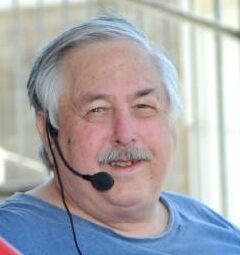Constable James QUINN
Constable James QUINN
Hit by Lightning
Cockatoo Island
12 January, 1862
The constable was killed when he was struck by lightning while on duty at Cockatoo Island on the night of 11 January, 1862. The Sydney Morning Herald of 14 January, 1862 reported at some length on inquest into Constable Quinn’s death. It is reproduced here, almost in its entirety, due to the subtle poise and clarity of the writer in describing the sad events which led to the death of the young constable.
THE LATE FATAL ACCIDENT BY LIGHTNING – An inquest was held in the coroner’s office, yesterday, on the body of Constable James Quinn, who, as stated in our issue of yesterday, died from the effects of being struck by lightning on Cockatoo Island on last Saturday night. It appeared that the deceased had only joined the City Police Force on the 2nd of December last, and went over to do duty on Cockatoo Island on the 7th of the present month. At eight o’clock on Saturday night, he, in company with Constable Campbell, went on duty in the prison yard. At about nine o’clock a heavy thunderstorm broke over the island, and in a few minutes there came a flash of lightning more vivid than those that had preceded it, and Inspector Lane, who was sitting in his quarters, heard a heavy crash, and thought the prison had been knocked down. He ran out and saw one constable at his post in the verandah, he then ran to the back and saw another at his post, everything appearing to be alright, but after standing a minute he (the inspector) was conscious of a strong smell of sulphur. As, however, nothing appeared to be touched, he returned indoors, when, in a few minutes, his attention was called to the cry of fire he again ran out and found the prisoners were calling out “fire, fire!” He shook the gate, and the guard having opened it, he inquired where the fire was, but could not ascertain, he called for Constable Campbell, who, after two or three calls, replied in a faint voice, “I am here, sir,” and by the lightning, which was very vivid, he saw him lying on the floor of the building known as the chapel, his head covered with blood. The inspector was under the impression on seeing the blood that some of the prisoners had escaped, and had attacked him. He accordingly at once ordered a double sentry to surround the prison, and enquired of Campbell what was the matter, to which he replied he did not know, but had been knocked down, enquiry was then made as to where his mate was, and Campbell replied “Poor fellow, I saw him over there,” pointing to a shed covered with galvanised iron in the yard.
Thither the inspector went, and inside saw Quinn leaning with his back against the wall, he went up to him, touched his head and found it cold, he then called for the dispenser (there being no qualified medical practitioner resident on the island), who came, and after the injured man had been removed, administered medicine, which revived him. Inspector Lane forthwith sent the police guard boat to Sydney, with messages requesting the immediate attendance of Dr West, and Dr. Rutter, the latter of whom at once responded to the call. On arrival at the island he found Quinn strongly convulsed, requiring several men to hold him. He ordered what he deemed requisite and then left, returning again the next morning, when the injured man was found to be much better. There being no hospital (beside the hospital for prisoners) on the island, Dr. Rutter recommended his removal to the Sydney Infirmary, and thither he was conveyed, arriving there at about one o’clock. Dr Roberts saw him soon after his admission, and treated him as he considered his case required. The sufferer never rallied, but expired about four o’clock on the same afternoon.
It came out in evidence that the rifle carried by the deceased at the time he was struck was untouched by the electric fluid, as also the ammunition on his person, but a gold chain attached to his watch was burnt through in several places. It appeared that the lightning struck the highest port of the building in which the deceased was found, descended through the coping to a lamp, close to the spot where he was discovered. There were no lightning-conductors on the island. The deceased had formerly been in the Irish Constabulary Force, he was a native of Ireland, a steady well conducted man, and about twenty eight years of age. He has left a widow and two children. The jury returned a verdict of “Died from being struck by the electric fluid on Cockatoo Island on the evening of the 11th instant.” The body of the deceased was interred in the Roman Catholic burial ground, in Devonshire Street, yesterday afternoon, all the available police, dressed in uniform, with white gloves and white cap-covers, following him to the tomb.
The constable joined the Sydney Police Force on 2 December, 1861 and at the time of his death he was stationed on Cockatoo Island. He was 28 years of age, and was a former member of the Royal Irish Constabulary.
Amazingly, the only two recorded NSW police deaths by lightning strike occurred on the same date, sixty years – to the day, apart. The other being Constable John Charles DONOVAN who was struck at Brewarrina, NSW, on the 12 January 1922.


